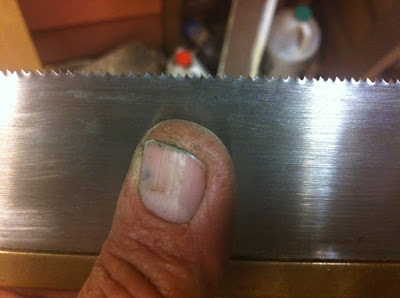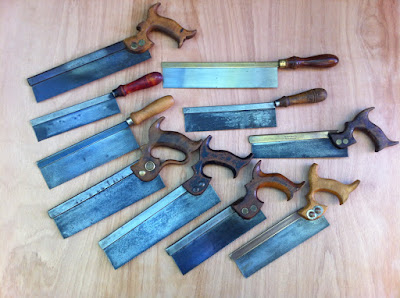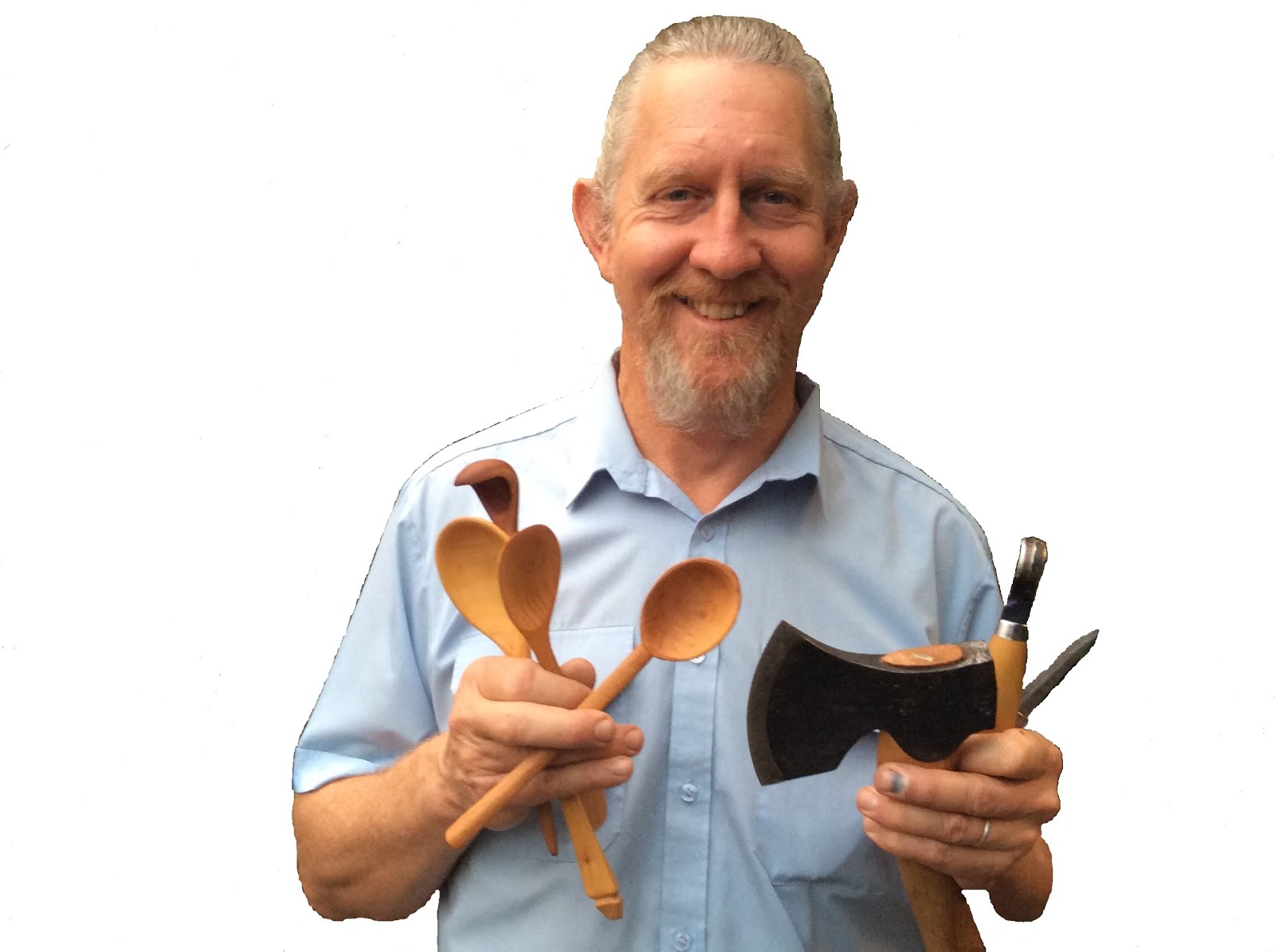Today was a saw sharpening day. I have a couple of teaching workshops coming up where I will be teaching the pleasures of hand cutting dovetail joints. It was time to get more dovetail saws organised for the bigger groups.
Much of my dovetail saw collection has been amassed (like the rest of my saw collection) over the last few years from antique tool sales, garage sales and flea markets. I am not a Tool Collector, incidentally, for my purpose is to put tools back into service, not into glass cabinets. Many of the priority saws have been piling up in a box awaiting for a sharpening day. That day arrived today.
 |
| A few of the saws awaiting cleaning up and sharpening... |
Some of the saws needed to be "given a birthday" first: Many needed surface rust removed, some needed a bit of straightening of their saw plate, the odd bit of nut tightening, and a bit of nourishment for the handles. The cleaning up of the saw plate was done with the wire wheel in the bench grinder, wet and dry paper, WD40, steel wool, etc.
When the saws were ready, I donned my magnifying head gear, sharpening equipment, saw vice, and got onto the next phase of the task. Sharpening day was well under way.
What a beautiful array of dovetail saws!! Several of them are well over 100 years old. The brands represented include Sheffield companies like Robert Sorby, Marples, Sanderson Brothers & Newbould, Bowden and then of course Disston from the USA. There are a bunch of other unknown brands present in the pile too, including the inevitable "Warranted Superior"which many companies seemed to use.
The dovetail saws in the pile are a mixture of open handled models, gents saws, and a few closed handled models. I had a few other saws waiting in that pile too, including a couple of old panel saws and small carcass/tenon saws. I'd do them if I had time. Such a beautiful array of saws and all oozing with history.
 |
| One of the Gents Saws in the saw vice. |
The Gent's Saw. What's in the name? In the 19th century, upper class recreational woodworking gentlemen did not want to appear like the lower class tradesmen, so I understand. Gentlemen required a different style of handle to the tradesmen's saws. Hence the Gent's Saw was born. This style still bears the name to this day.
 |
| Sharpening a Gent's Saw using the new Veritas filing guide. |
What makes saw a Dovetail Saw? Ideally, they will have a thin saw plate for minimal kerf, minimal set of the teeth, be only 8 to 10 inches long, and be filed with ripping teeth. Saws are generally filed for ripping (cutting along the grain) or for cross cutting (cutting across the grain). It is the various angles of the teeth which makes the difference. Dovetailing involves cutting along the grain, so the best dovetail saws are filed for ripping - that is, filed straight across. This creates a chiseling action by the teeth - the most efficient and clean way to cut along the grain. Crosscutting teeth are filed on a different angle to create a slicing action on the fibres of the wood. Whatever the style and size of the saws in my pile awaiting sharpening, I was setting them up to be used almost exclusively for dovetailing, so they would all be filed for ripping. There is a science to getting the shape of the teeth right - but I will save a discourse on that for another post.
In the past I have used a block of wood driven onto the far end of the file as the guide for consistent filing. This was the first time I have used the new Veritas filing guide... and I like it very much.
 |
| Looking good. Another saw done. The test cut was good too. |
While the filing generally went well, there was one sad story. One of the really old open handled saws had a couple of bad patches of corrosion on the saw plate. There were almost no teeth left on it - I'm sure the previous owner must've been cutting bricks with it! I was having to re-form the teeth on the saw plate. Sadly, while filing a corroded section a small piece blew out. At least the beautiful handle and nuts can be used on another saw.
 |
| Bummer. Too much corrosion, so filing caused a blow out. This saw now in the spare parts box. |
Keeping the saws sharp.
Some hours later, I had finished filing assorted 10 dovetail saws.
 |
| Ten beautiful dovetail saws all cleaned up, freshly sharpened and ready for action |
However, the saws would need some protection on their edges to ensure they don't knock against other or against other metal objects, as this bluntens them. I commonly use a piece of 1/2" trickle irrigation tubing slit along much of its length, and held onto the saw with rubber bands made from cross-sections of a bicycle tube. The recycler's solution to protecting the saws' edges.
 |
| Protection in place. A pile of ten sharpened dovetail saws. |
A good day's work.
It can do your head in, staring hard through your magnifying head gear for hours on end while filing and setting saw teeth. By the time I called it a day, I had filed 14 saws. Ten dovetail saws filed for ripping, three small tenon/carcass saws filed for cross cutting, and a panel saw filed for cross cutting. Sensitive finger tips from too many pin pricks from the sharp teeth, tiredness from concentrating hard for so many hours, and a sore back from so much stooping over the saw vice.
Despite all that, I was very satisfied with the day's achievement. I have never filed so many saws in one day, and I was a few steps closer to getting enough saws ready for the dovetailing workshops coming up in June. It was a good day's work.
At the start of the year, I had resolved that 2013 would be the year that I become very competent at saw sharpening. I reckon things are going according to plan... my skills are improving.
 |
| All in a day's work. |
Saw sharpening day was a lot of work but very successful. However, I need to do many more such days if I am to make a dent in the huge pile of saws awaiting similar treatment!! Hopefully my skills will keep improving as I go...
.jpg)


